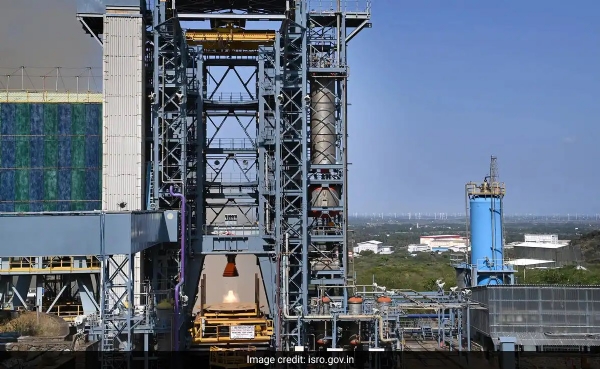ISRO conducts successful trials of Propulsion System for Gaganyaan Mission
28 Jul 2023 12:53:07
ISRO has successfully completed two additional tests as part of its preparations to assess and improve the performance of the propulsion system that will be utilized to launch India's first human spaceflight mission, Gaganyaan.
On Wednesday, "hot tests" on the Gaganyaan Service Module Propulsion System (SMPS) were carried out at the ISRO Propulsion Complex in Mahendragiri, Tamil Nadu.

According to ISRO, the Gaganyaan project aims to demonstrate human spaceflight capabilities by sending a crew of three people into a 400-kilometer orbit for a three-day trip and safely returning them to Earth by landing in Indian sea waters.
"These tests will further validate and refine the performance of the propulsion system, ensuring its readiness for the upcoming Gaganyaan mission," according to the statement.
"These (July 26) hot tests were the second and third in the Service Module - System Demonstration model (SM-SDM) phase 2 test series. The first hot test was conducted on July 19, 2023," the national space agency, located in Bengaluru, said in a statement.
The first hot test, which lasted 723.6 seconds, demonstrated Orbital Module injection as well as the calibration burn of 100 Newton thrusters and Liquid Apogee Motor (LAM) engines.
"The calibration burn was critical in identifying and isolating any non-functional engines." The LAM engines and reaction control system (RCS) thrusters worked as predicted, according to the statement.